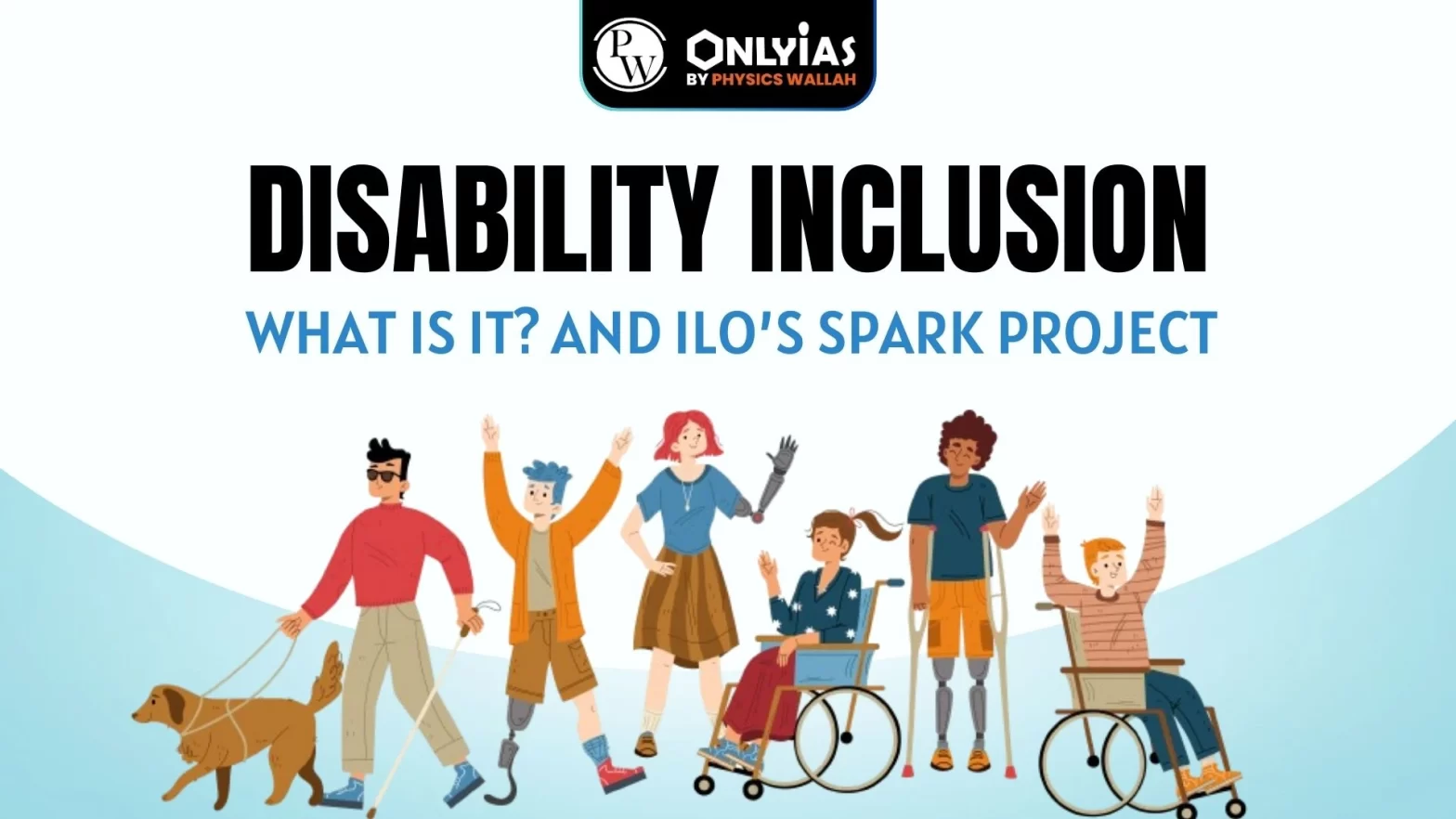Context: This article is based on an Editorial “India, disability inclusion and the power of ‘by’” Which was published in the Hindu. Globally, 1.3 billion people live with some form of disability, and if they receive inclusion into the economy, they can help boost global GDP by 3% to 7%.
- This economic boost data was provided by the International Labour Organization (ILO).
| Relevancy for Prelims: Disability Inclusion, International Labour Organisation (ILO), SPARK Project, and the International Fund for Agricultural Development (IFAD).
Relevancy for Mains: Social Empowerment: Disability inclusion, vital for social empowerment, addressed by ILO’s SPARK Project, aligns with India’s rights-based approach and global development goals. |
Why is Disability a Challenge?
- High Existence: Disability as an identity and entity exists at the intersection of multiple vulnerabilities — social, economic and gender.
- High Presence in Developing Countries: 80% disabled people live in developing countries and 70% of them live in rural areas.
- Rural areas also have high agricultural dependence and face the heightened risk of climate calamities (such as reduced access to clean water and food, heatwaves & floods).
- Challenges Faced by Disabled Persons: Current systems are designed for persons without disabilities and results in exclusion to people with disabilities.
- It results in them experiencing higher instances of poverty, lack of access to education and opportunities, informality and other forms of social and economic discrimination.
What is the need for disability inclusion?
- Right to Work: Everyone has the right to equal treatment and opportunities at work.
- Less Percentage in Employment: The current employment scenario is limited, providing fewer jobs for persons with disabilities and perpetuating stereotypes that create further barriers.
- The United Nations Convention on the Rights of Persons with Disabilities: It suggested changing attitudes and perceptions towards persons with disabilities.
- Inclusion should be viewed from a social development dimension.
- Benefit for All: Disability inclusion is rooted in assuring the rights of persons with disabilities and recognising the economic benefits of inclusion.
- Rights in India: The Central and State governments have various schemes and a unique id for persons with disabilities (UDID) card, established as part of the Rights of Persons with Disabilities Act (2016).
Also Read: ILO Report On Occupational Safety And Health (OSH)
What is the Sparking Disability Inclusive Rural Transformation (SPARK) Project?
- Aim: The SPARK project has been able to bring an attitudinal shift towards persons with disabilities, right from the societal to administrative levels.
- Implementation By: The ILO and the International Fund for Agricultural Development (IFAD), in collaboration with the Women’s Development Corporation in Maharashtra.
- Intentions: Persons with disabilities were put in the lead, being identified from the villages, and trained as Disability Inclusion Facilitators (DIFs).
- Awareness for Inclusion: The DIFs engage with the community, persons with disabilities, caregivers of persons with disabilities, women from self-help groups and other stakeholders to raise awareness about disability inclusion and barriers to inclusion.
- Inclusive Development: The DIFs identify women with disabilities and mainstream them in existing self-help groups for social and economic development.
- Also, these women have been able to access funds to start an enterprise.
The Path Ahead:
- Inclusion at all Levels: To achieve social justice, there is a need for the inclusion of persons with disabilities in all spheres of development, starting with rural areas and rural resilience.
- Availability of More Opportunities: Evidence shows a bi-directional link to poverty, nutrition, and hunger, which requires more inclusive opportunities and employment in rural areas.
- Need of Fundamental Shift: Given the historic marginalisation of persons with disabilities and the backsliding of the progress on the Sustainable Development Goals, a fundamental shift in commitment, solidarity, financing and action is critical.
- Time for Prioritization: Time has come that voices and needs of persons with disabilities be prioritised at the centre of the global development agenda.
- Role of Private Sector: It would help in promoting the employment of persons with disabilities.
- Engagement of Employers’ Federations: Representing small, medium-sized enterprises and trade unions would promote the employment of persons with disabilities.
- A Bottom-up Approach: It is crucial to build productive pathways out of poverty and ensure that persons with disabilities are recognised as active members of society and the economy.
- Awareness to ensure last-mile Connectivity: It begins with the capacity-building of community leaders who can advocate for this at the grass-roots level.
Conclusion:
Fostering disability inclusion, as exemplified by initiatives like the ILO’s SPARK Project, is not just a moral imperative but a strategic pathway towards a more equitable and economically vibrant global society.
![]() 4 Dec 2023
4 Dec 2023

